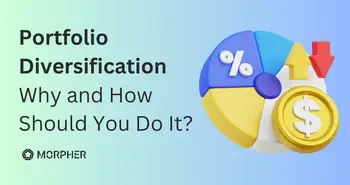Portfolio Rebalancing: How to Keep Your Investments on Track

As a seasoned investor, I cannot stress enough the importance of portfolio rebalancing in achieving long-term financial success. By taking the time to understand the concept, benefits, and process of rebalancing, you can effectively manage risks, enhance returns, and overcome common challenges. In this article, I will guide you through the ins and outs of portfolio rebalancing, debunk misconceptions, and offer practical strategies for efficient implementation.
Understanding Portfolio Rebalancing
Definition of Portfolio Rebalancing
Portfolio rebalancing involves periodically realigning the asset allocation of your investment portfolio to maintain your desired risk and return objectives. It ensures that your investments remain in line with your overall investment strategy, even as market conditions change.
When you initially set up your investment portfolio, you carefully selected the mix of assets based on your risk tolerance, financial goals, and time horizon. However, as time passes, market fluctuations can cause the value of different assets to shift, leading to a drift in your portfolio's original allocation. Portfolio rebalancing steps in to address this drift by bringing your investments back to their intended proportions.
The Role of Portfolio Rebalancing in Investment Strategy
Portfolio rebalancing plays a vital role in preserving the integrity of your investment strategy. Over time, the values of different asset classes within your portfolio may grow unequally, causing your original asset allocation to deviate. Rebalancing helps bring your portfolio back to its target allocation, which ultimately helps manage risk and maximize potential returns.
By rebalancing your portfolio, you are essentially selling assets that have performed well and buying assets that may be undervalued. This contrarian approach forces you to sell high and buy low, a fundamental principle in investing that can enhance your long-term returns. Additionally, regular rebalancing encourages discipline and prevents emotional decision-making during market fluctuations, ensuring that your investment decisions are based on your predetermined strategy rather than short-term market movements.
The Benefits of Regular Portfolio Rebalancing
Risk Management through Rebalancing
One of the key benefits of portfolio rebalancing is risk management. By reviewing and adjusting your portfolio to maintain your desired asset allocation, you can mitigate the risks associated with an over-concentration in certain investments. This reduces the impact of market volatility on your overall portfolio performance.
Furthermore, regular portfolio rebalancing can also help in aligning your investments with your current financial goals and risk tolerance. As your circumstances change over time, your investment strategy may need to be adjusted to ensure that it remains in line with your objectives. By rebalancing your portfolio, you can ensure that your investments continue to reflect your evolving needs and preferences.
Enhancing Returns with Rebalancing
Regular rebalancing not only helps manage risk but also enhances returns. By selling assets that have performed well and buying more of those that have lagged, you can take advantage of the “buy low, sell high” principle. Over time, this disciplined approach can potentially increase your overall investment returns.
In addition, portfolio rebalancing can also help in maintaining a disciplined investment approach and preventing emotional decision-making during market fluctuations. By sticking to a predetermined rebalancing schedule, investors can avoid making impulsive decisions driven by short-term market movements. This disciplined approach can lead to a more consistent and rational investment strategy over the long term.
The Process of Portfolio Rebalancing
When to Rebalance Your Portfolio
The timing of portfolio rebalancing depends on your individual investment strategy and tolerance for risk. A general guideline is to review and rebalance your portfolio annually or semi-annually. However, significant market events or major life changes may warrant more frequent adjustments.
It's important to consider not only market conditions but also your own financial goals and risk tolerance when deciding when to rebalance your portfolio. For example, if you have a long-term investment horizon and are comfortable with market fluctuations, you may opt for a less frequent rebalancing schedule. On the other hand, if you are nearing retirement or have a lower risk tolerance, more frequent rebalancing may be necessary to ensure your portfolio aligns with your changing needs.
How to Rebalance Your Portfolio
Rebalancing your portfolio involves four key steps: assessing your current asset allocation, comparing it to your target allocation, determining the necessary adjustments, and executing those adjustments. Online investment platforms and financial advisors can provide valuable tools and guidance to simplify and streamline this process.
When assessing your current asset allocation, it's essential to consider not only the individual investments in your portfolio but also how they interact with each other. For example, if you have multiple investments that are highly correlated, your portfolio may be more susceptible to market volatility. Diversifying across different asset classes can help reduce this risk and improve the overall stability of your portfolio.
Common Misconceptions about Portfolio Rebalancing
Rebalancing vs. Timing the Market
One common misconception is that rebalancing is equivalent to timing the market. However, portfolio rebalancing focuses on maintaining your desired asset allocation, rather than attempting to predict short-term market movements. It is a disciplined strategy that helps you stick to your long-term investment plan.
The Impact of Transaction Costs on Rebalancing
Some investors worry about transaction costs associated with rebalancing. While these costs should be considered, they are typically outweighed by the long-term benefits of rebalancing. Moreover, by utilizing low-cost investment options and tax-efficient strategies, you can minimize the impact of transaction costs.
Overcoming Challenges in Portfolio Rebalancing
Emotional Barriers to Rebalancing
Emotions can be a significant hurdle when it comes to rebalancing your portfolio. It's common for investors to feel apprehensive about selling winning assets or buying underperforming ones. However, by sticking to a solid investment strategy and focusing on long-term goals, you can overcome these emotional barriers and reap the rewards of rebalancing.
Practical Strategies for Efficient Rebalancing
Efficient rebalancing involves implementing strategies that minimize costs and maximize returns. One approach is to use cash flows within your portfolio, such as dividends and interest, to rebalance. This reduces the need for frequent buying and selling, lowering transaction costs. Additionally, employing tax-efficient strategies, such as asset location, can further enhance the efficiency of your rebalancing efforts.
As an expert investor, I have personally experienced the positive impact of regular portfolio rebalancing. It ensures that my investments stay aligned with my financial goals and allows me to effectively navigate changing market conditions. Remember, constructing a robust investment portfolio is just the beginning; maintaining it through disciplined rebalancing is the key to long-term success!
Frequently Asked Questions about Portfolio Rebalancing
1. How often should I rebalance my portfolio?
The frequency of rebalancing depends on your investment strategy and circumstances. As a general guideline, annual or semi-annual reviews are recommended. However, significant market events or life changes may require more frequent adjustments.
2. Does rebalancing incur additional costs?
While rebalancing may involve transaction costs, such as brokerage fees, these costs are typically minimal compared to the long-term benefits. By adopting low-cost investment options and tax-efficient strategies, you can minimize the impact of transaction costs.
3. How do emotions affect the rebalancing process?
Emotions can make it challenging to stick to a rebalancing strategy. However, by focusing on long-term goals and adopting a disciplined approach, you can overcome emotional barriers and make informed decisions.
4. Can rebalancing enhance my overall investment returns?
Yes, rebalancing can enhance returns by allowing you to buy assets when their prices are relatively low and sell them when their prices are high. This disciplined approach takes advantage of market fluctuations and is aligned with the principle of “buy low, sell high.”
5. Do I need professional assistance for rebalancing my portfolio?
While professional assistance can be valuable, many online investment platforms provide tools and guidance to simplify the rebalancing process. It ultimately depends on your comfort level and complexity of your financial situation.
Remember, portfolio rebalancing is a proactive strategy that maximizes the potential of your investments while managing risks. It ensures that you stay on track with your financial goals, even in the face of changing market conditions. Embrace the power of rebalancing and watch your portfolio thrive!
Ready to take your portfolio rebalancing to the next level? Discover the future of investing with Morpher, the revolutionary trading platform that leverages blockchain technology for zero fees, infinite liquidity, and a truly unique trading experience. Whether you're looking to trade stocks, cryptocurrencies, or even dive into the world of NFTs and collectibles, Morpher makes it possible with fractional investing, short selling, and up to 10x leverage. Take control of your investments with the safety of the Morpher Wallet, and join a global community that's democratizing trading. Sign Up and Get Your Free Sign Up Bonus today, and transform the way you trade!

Disclaimer: All investments involve risk, and the past performance of a security, industry, sector, market, financial product, trading strategy, or individual’s trading does not guarantee future results or returns. Investors are fully responsible for any investment decisions they make. Such decisions should be based solely on an evaluation of their financial circumstances, investment objectives, risk tolerance, and liquidity needs. This post does not constitute investment advice.

Painless trading for everyone
Hundreds of markets all in one place - Apple, Bitcoin, Gold, Watches, NFTs, Sneakers and so much more.

Painless trading for everyone
Hundreds of markets all in one place - Apple, Bitcoin, Gold, Watches, NFTs, Sneakers and so much more.








